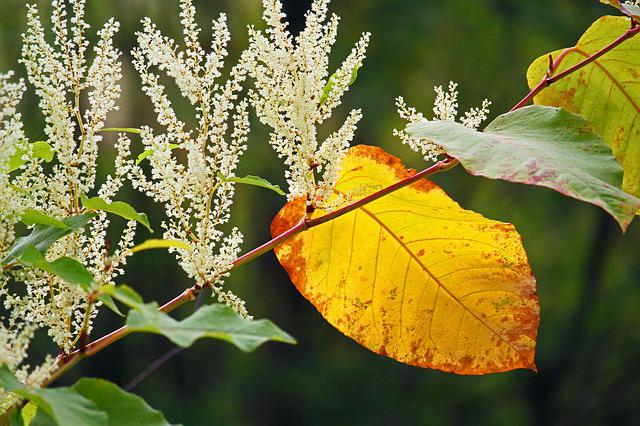
Unfortunately, due to poor advice from councils, it is possible to unknowingly spread the destructive Japanese knotweed plant as opposed to getting rid of it according to University of Exeter researchers.
There are some local councils who are providing excellent advice, however, there are other councils who are not doing so which is creating mixed messages. Unfortunately, this bad advice can either lead to the spread of this plant or cause unnecessary panic. The Japanese knotweed plant is also known as “Britain’s largest female” throughout the country.
Japanese knotweed defined
This is a perennial plant which is native to Japan and is also related to buckwheat. Its Latin name is Fallopia japonica and it has stems that have the potential to reach chest height it usually grows in numerous thick clumps. This plant is known as an invasive species in lots of non-Asian countries.
Philipp von Siebold was a botanist 1850 who actually collected some samples from a Japanese volcano slope and sent them to the Kew Royal Botanic Gardens. In only 4 years these plants were being offered via commercial nurseries as fodder for various animals.
What is the issue?
There are three main problems with this plant. The first problem is that it actually has the ability to grow through bricks and concrete which leads to it damaging buildings, roads and other infrastructure. It is extremely difficult to kill and it grows quite densely and causes native plants to get excluded. To learn more about Japanese Knotweed, see Japanese knotweed facts.
Is it that bad?
Unfortunately, this plant is the most invasive, aggressive and destructive plant according to the Environment Agency. In addition to gravely damaging concrete foundations, it also damages architectural sites, flood defences etc.
The Japanese knotweed is so extremely difficult to control and destructive that homes that have an issue with it have severe issues getting approved for mortgages from lenders. In many cases, the homes don’t even get sold. There is even a report of a gardener who was so stressed out and worried about this particular plant that he went mad and murdered his own wife.
According to the Guardian, this plant grows very quickly and can grow up to 4 meters in 10 weeks. The roots also spread a lot and can spread as much as 7 meters. Unfortunately, all it takes is a small fragment of this plant for it to regrow. So, completely getting rid of the Japanese knotweed is no easy task.
How can it be killed?
This plant grows and regrows quite quickly which means it is resistant to cutting. If it is cut, the pieces need to be carefully disposed of. Due to this, it is important that gardeners call in the professionals to do this. This plant can be killed using chemical herbicides. There have been many experiments and spraying seawater can help. This is a good option where there is no access to herbicides.
Japanese knotweed reproduction
This plant can be either male or female. However, in the United Kingdom, there is only the female variety. Due to this, it is not possible for it to reproduce via pollen. However, in the UK, this plant populates itself by cloning itself repeatedly.
Every single one of these plants in the UK has been grown from a fragment or another Japanese knotweed plant. In many cases, this was done unknowingly by councils and even gardeners that move dirt from one area to another.
Why is this plant known as Britain’s largest female?
Since the Japanese knotweed plants in the UK are all female and are clones of one another, they are all the same plant. This is the case even though the plants are not actually joined. As a result, it is actually the biggest female in Britain and potentially the world.
